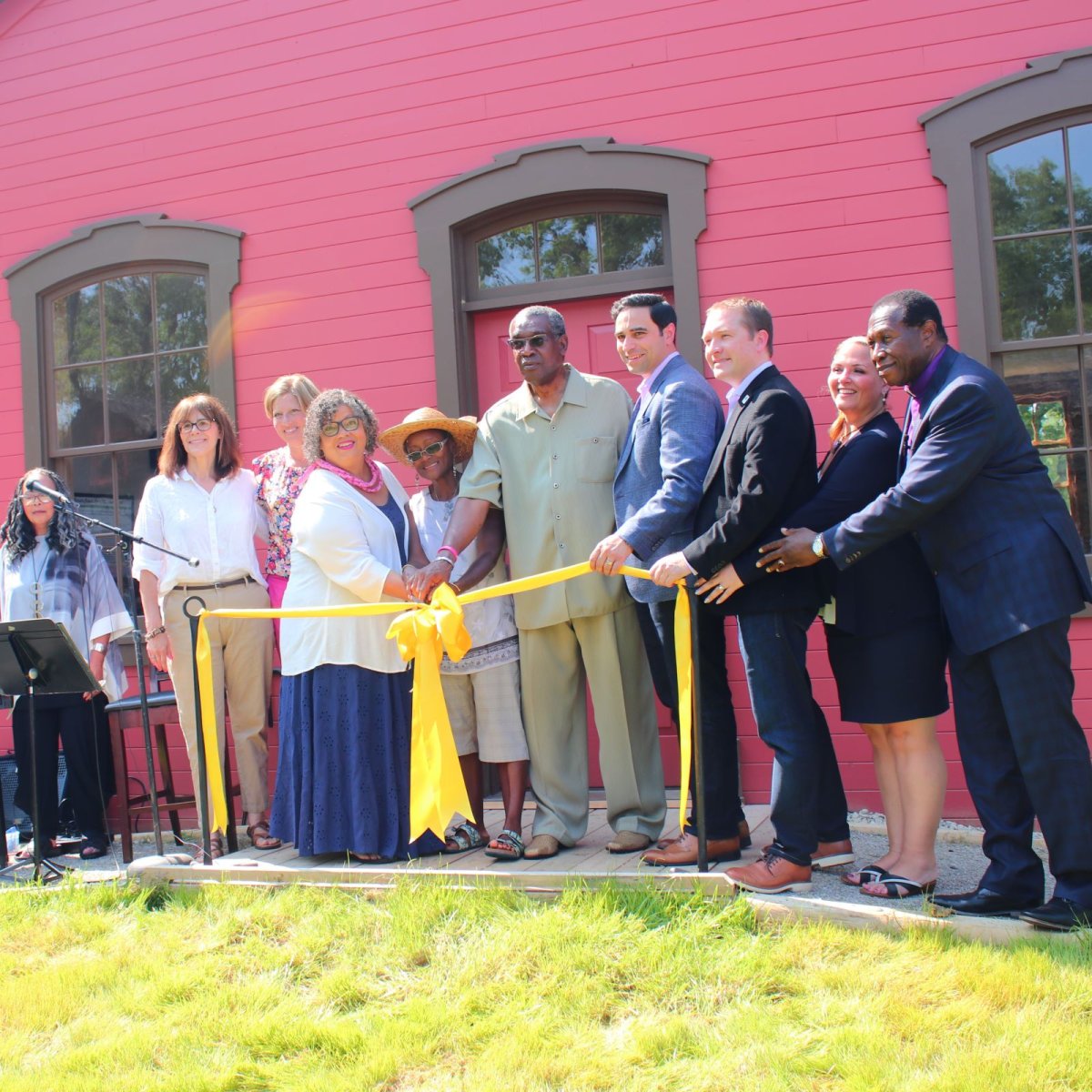After a long fundraising campaign and a trip from London, Ont.’s SoHo neighbourhood to the northeast end of the city, the Fugitive Slave Chapel has opened in its new home.

Originally built in 1848 at 275 Thames St., the chapel, originally known as the African Methodist Episcopal Church, was used as a sanctuary and meeting place for African Americans who had escaped slavery through the Underground Railroad.
In 1869, the chapel was replaced by a new building on Grey Street and ended up serving as a private residence until 2013, when it was faced with potential demolition.
A community-led effort saw the building moved to Grey Street in November 2014, next to the church that had replaced it nearly a century and a half earlier.
The chapel’s owner, the British Methodist Episcopal Church of Canada, began talks with Fanshawe Pioneer Village (FPV) to relocate and restore the chapel in August 2021.
In November 2022, the building was moved to FPV, where it was restored to the style of when it was originally built.
Dawn Miskelly, the executive director at FPV, says the chapel adds to the fabric of London’s community.
“The history of our community isn’t just one narrative, there’s multiple groups of people that were part of the community when it was founding,” she said.
“When people see their histories being represented, they’re more likely to engage and to visit and to learn more.”
The project was completed thanks to community fundraising, which allowed FPV to cover the $465,000 in restoration and relocation expenses.
“We really are working to share more stories here at the village and different histories from the community and this really gives a physical presence and representation of London’s Black community.”
Carl Cadogan, the chair of the London Black History Coordinating Committee, one of the groups involved in the project, says it’s hard to believe the project is finally done.
“A lot of people spent a lot of time trying to make this happen,” he said.
He added that prior to the chapel’s move, concerns were raised about damage the building incurred due to weather and vandalism.
“Before it was moved, I went through the building, and it was concerning to all of us. It was great to see the building restored and to walk through the building. It was amazing. It was really quite amazing.”
Both Cadogan and Miskelly say the chapel’s relocation to FPV will allow Londoners and Canadians on the whole to learn more about both early Canadian history and Black history, and how the two interconnect.
Going forward, a guide to the chapel’s history is being developed alongside a Black history researcher, which will allow FPV to develop education and programming about the chapel and London’s Black history.
“We’ll use that research to layer in Black history throughout the village. There’s many different areas where we have some connections already, like the print shop or the schoolhouse. Adding those histories throughout the village is something that will come from the next phase of that research,” says Miskelly.
Adding to that, Cadogan says the chapel is more than just Black history.
“It’s London’s history. And it’s for people to understand a bit about the impact and involvement of the Black community in London in the 1800s and beyond.”




Comments